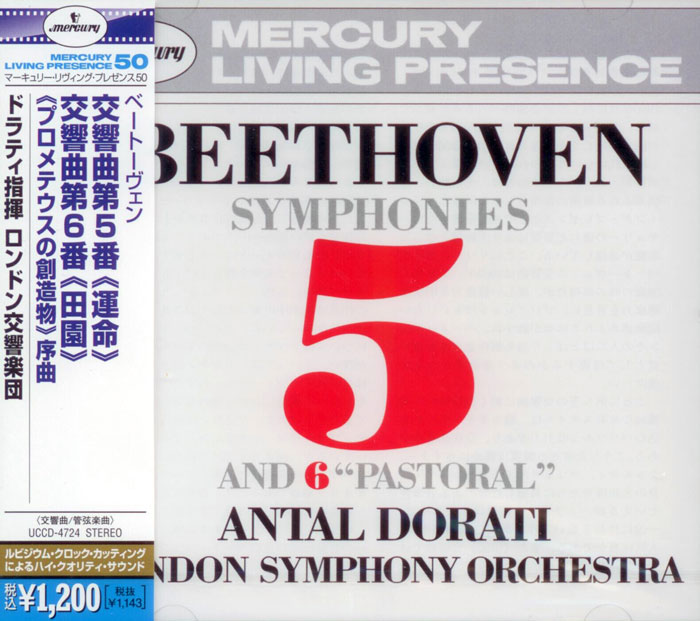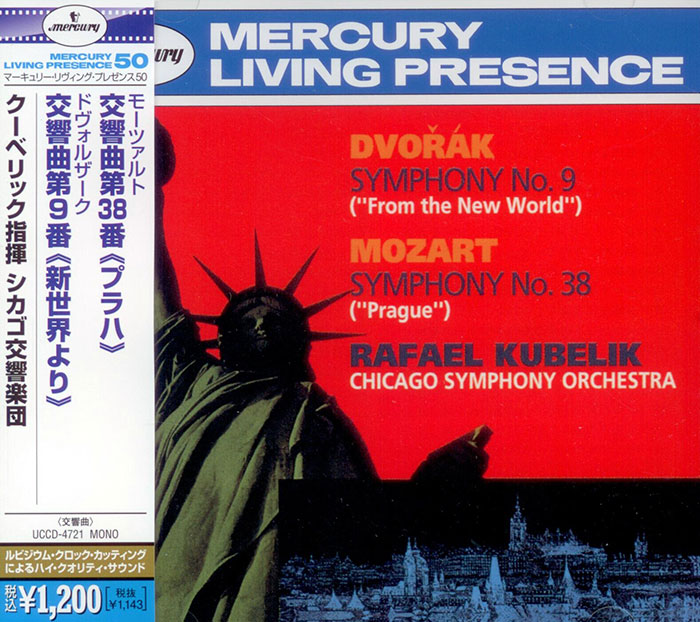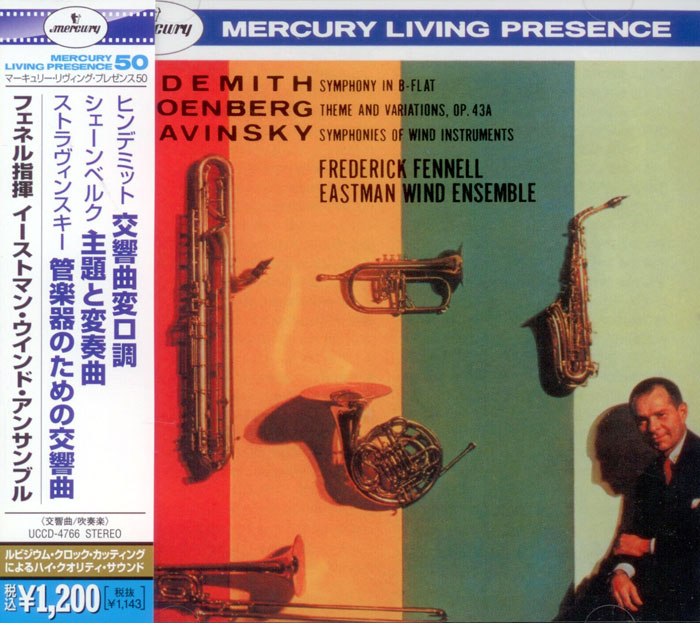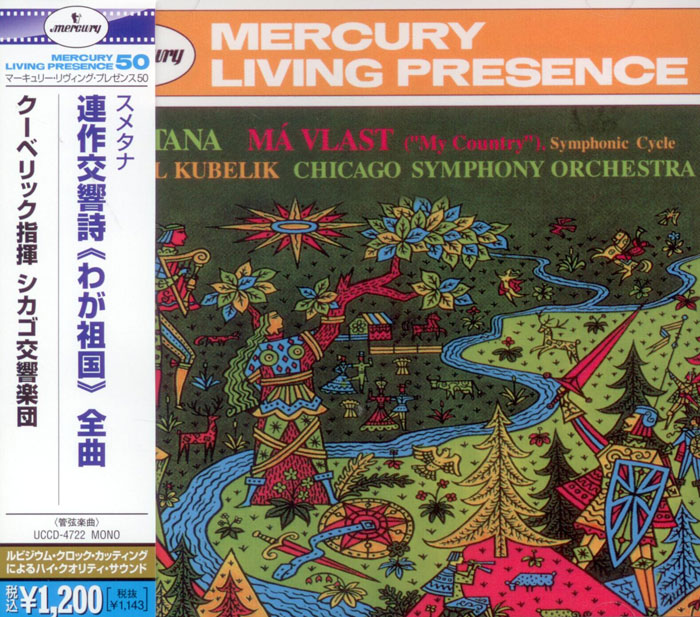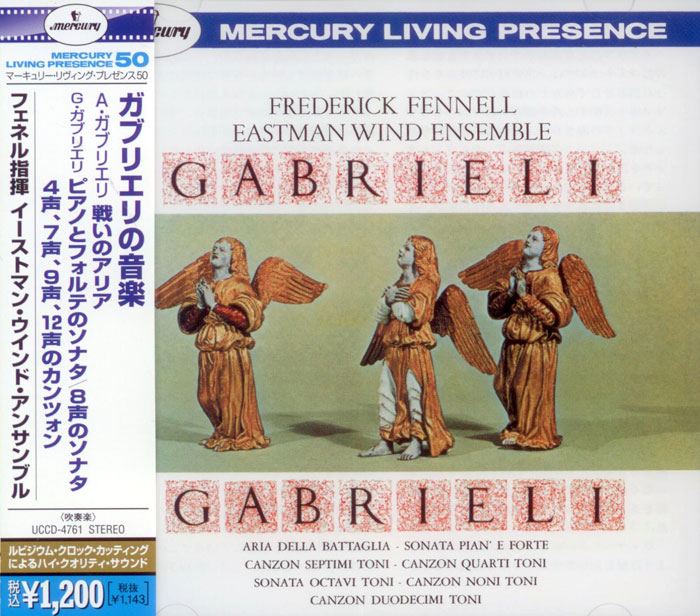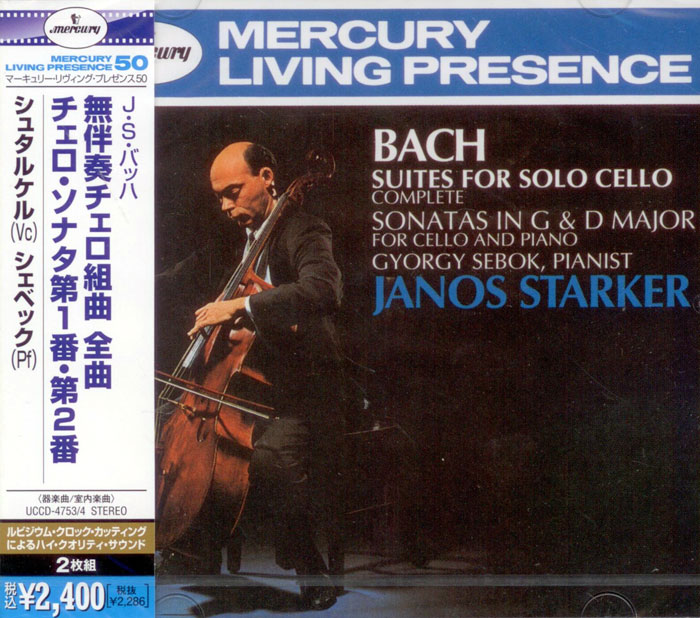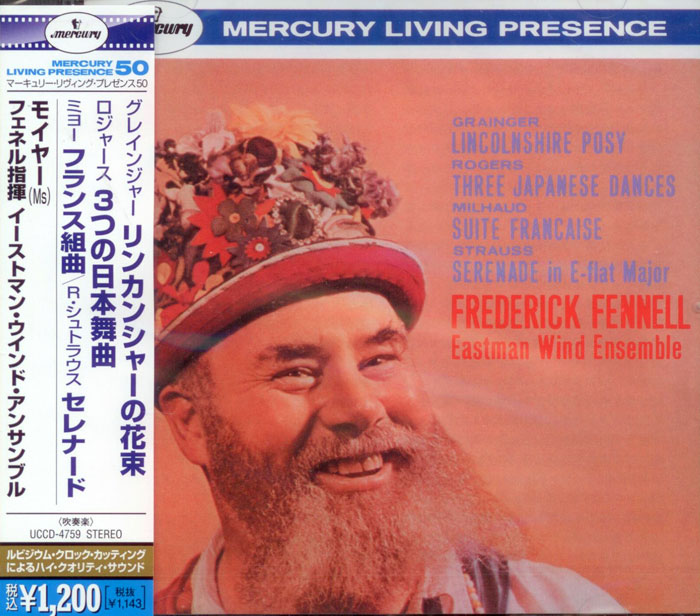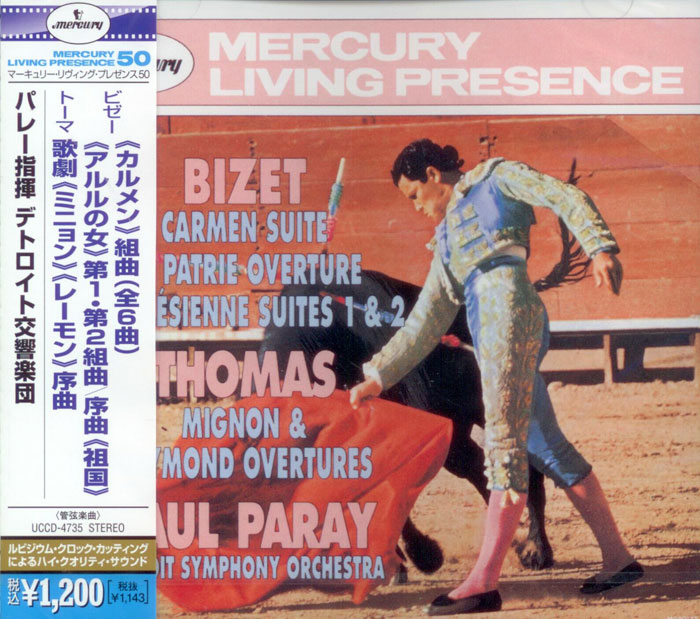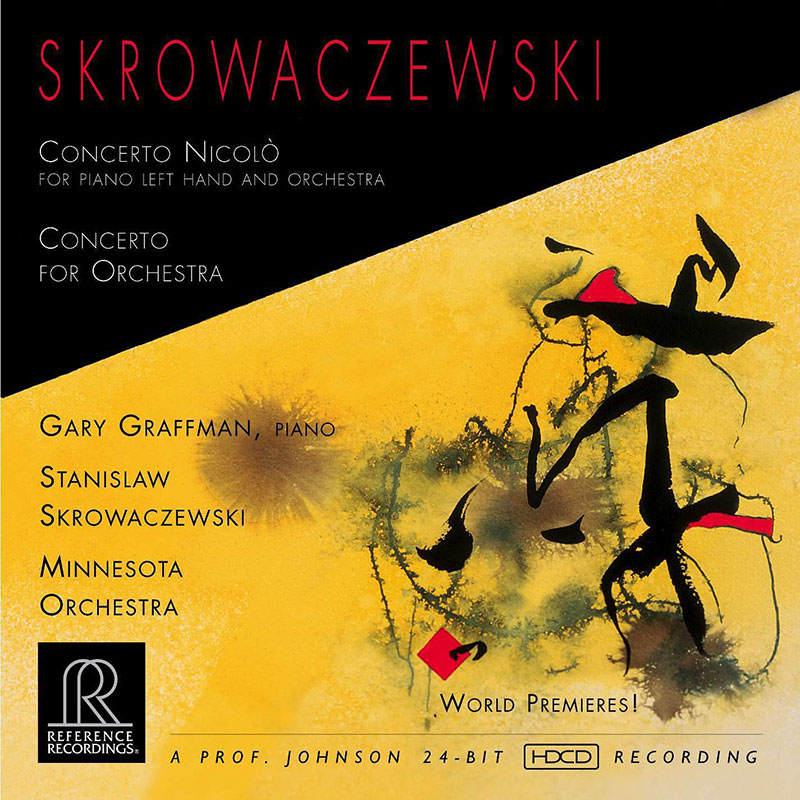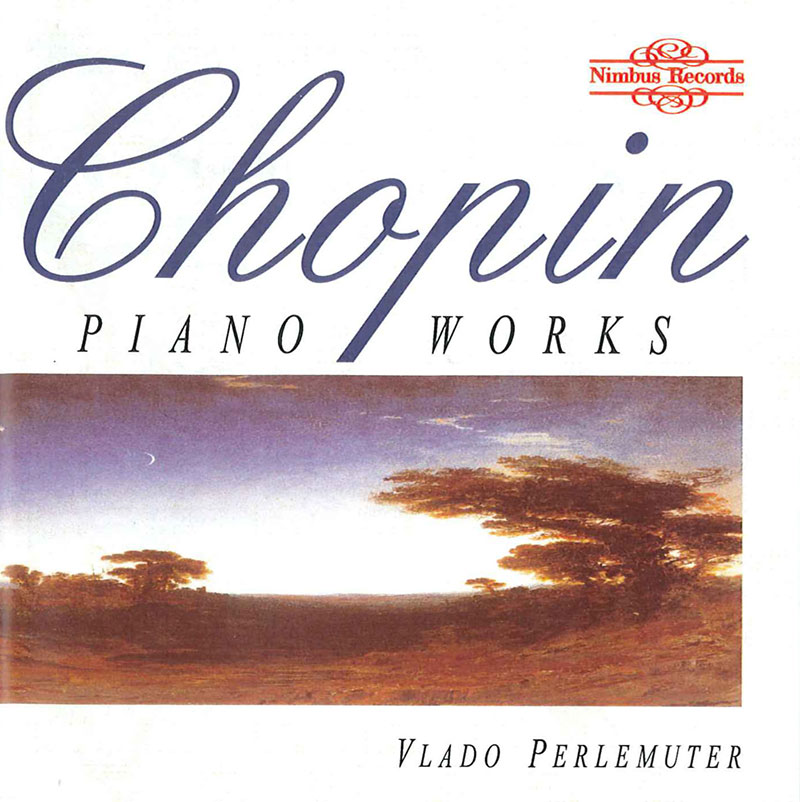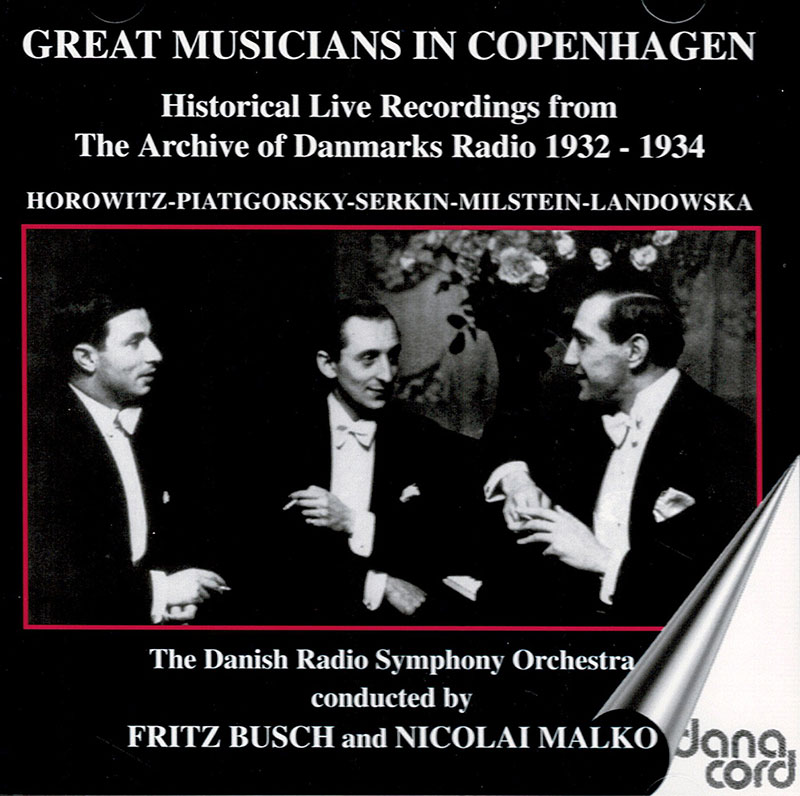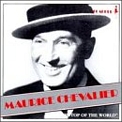Logowanie
Dlaczego wszystkjie inne nie brzmią tak jak te?
Chai Lang, Fan Tao, Broadcasting Chinese Orchestra
Illusive Butterfly
Butterly - motyl - to sekret i tajemnica muzyki chińskiej.
Brzmią jak sen na jawie
KHACHATURIAN, SHOSTAKOVICH, Antal Dorati, Stanislaw Skrowaczewski, The London Symphony Orchestra
Gayne / Symphony No. 5 in D minor, Op. 47
Stanisław Skrowaczewski,
Winylowy niezbędnik
ClearAudio
Cartridge Alignment Gauge - uniwersalny przyrząd do ustawiania geometrii wkładki i ramienia
Jedyny na rynku, tak wszechstronny i właściwy do każdego typu gramofonu!
ClearAudio
Harmo-nicer - nie tylko mata gramofonowa
Najlepsze rozwiązania leżą tuż obok
IDEALNA MATA ANTYPOŚLIZGOWA I ANTYWIBRACYJNA.
Osobowości
SKROWACZEWSKI, Stanislaw Skrowaczewski, Minnesota Orchestra
Concerto Nicolo for piano left hand and orchestra
WORLD PREMIERE!
Maurice Chevalier
Maurice Chevalier
- 1. Valentine
- 2. It's a Habit of Mine
- 3. Wait 'Til You See "Ma Cherie"
- 4. On Top of the World, Alone
- 5. Sweeping the Clouds Away
- 6. All I Want Is Just One (Girl)
- 7. Mama Inez
- 8. Toi et Moi
- 9. You Brought a New Kind of Love to Me
- 10. Living in the Sunlight
- 11. Paris, Stay the Same
- 12. My Love Parade
- 13. Dites-Moi Ma Mère...
- 14. Quand on Est Tout Seul
- 15. Walkin' My Baby Back Home
- 16. Oh, Come on, Be Sociable
- 17. You Took the Words
- 18. Hello, Beautiful!
- 19. Mimi
- 20. Ma Pomme
- 21. Ah! Si Vous Connaissiez Ma Poule
- 22. Singing a Happy Song
- 23. Rhythm of the
- Maurice Chevalier - vocal
Maurice Chevalier: we remember him well - and no wonder, for few cabaret entertainers (which is hasically what he was) enjoyed so lengthy and universally successful a career. Starting as a twelve-year-old ingenu on the boards of a Paris Music Hall, he was at the age of eighty to conclude his extraordinary career with a highly successful world farewell tour, classic films such as Gigi only recently to his credit. What was the secret? His very evident joie de vivre, warmth, charm and underlying romantic heart; plus a basically good-humoured acceptance of whatever life brings, which must greatly have cheered his audiences - both live and in the cinema-during the lean 1930s. This acceptance extended into the artist's old age, as is suggested by the well-known lines from Gigi "The fountain of youth is clead and faint/ Methuselah is my patron saint/1'm glad I'm not young any more". Contemporary documentation provided by Chevalier's biographers indicates that this philosophy was `for real' for the man as for the mask and that is one reason why Maurice Chevalier was ahle to survive as a convincing and pleasing entity right until the very end. Maurice Chevalier was born in the slum Menilmontant district of Paris on the same day upon which that splendid new tower of M. Gustave Eiffel was to be illuminated for the first time; how curiously coincidental that the edifice and the entertainer were to come to personify for the world in general not only Paris herself but also `La Belle France' in general. The date was 12th September 1888, and Maurice's arrival completed a family of seven children (only three of whom were to survive) born to a devoted and industrious Belgian mother, nicknamed "La lLocque" and one Victor Chevalier, a loutish craftsman who spent much of his time drunk. The mother slaved over the housework - and at lacemaking, to help supplement the family's meagre income. One Clay Victor came home more drunk than usual, turned on his heel, stomped out, and was never seen again. "La Locque" was left to bring up three boys, in appalling conditions and without any assistance. Maurice completed his formal education, such as it was, at the age of ten. After experimenting hrictly with apprenticeships in various Crafts, he joined a circus as eneral clogshody. No money was involved, for he had no skills; young Maurice merely lived in the hope that he might stand in at the last minute for an indisposed acrobat or clown, and so make himself a name. Instead, he fell oft a tightrope, broke his pelvis, and was retrieved hurriedly by his mother. "La Locque' felt that cafe-concert work should be safer. and so the boy was engaged at the raucous `Cafe des Trois (.ions', but was not however well received - he was after all only twelve - but at a subsequent audition at the Casino des Tourelles found more favour and was engaged there as a singer at 12 francs a week; albeit humbly, his true career had begun. Here he was to learn the arts of timing, phrasing and delivery, and that knack of assessing and responding to the many different moods which can characterise an audience. The toot was in the door. By 1902 Maurice had an agent, and was appearing at the fashionable Salle Wagram for the useful sum of thirty-five francs a week. He toured, catching his first glimpse of the sea at Le Havre, but work was. overall, thin on the ground, and he began to give up hope. A flagging interest in (he theatre was re-kindled when upon visiting the Eldorado Music Hall, he caught sight of the delightful young singer Mistinguett, who w as to become the principal love of Chevalier's life. his Career took off again, with ups and clowns; mach was learned from watching the routines of the English artist f Harry Fragson, who was popular in France at the time. Maurice Chevalier now made a successful tour of Belgium, stormed the notoriously difficult city of Marseilles, and then went on to conquer Bordeaux. Composers began to write songs for him. Back at the Eldorado he achieved great success and was by good fortune noticed by a talent scout from the Folies Bergeres, to which house he was promptly invited. As a stage performer, Maurice Chevalier had arrived. His career was interrupted in December 1913 when he was called up for military service. A fellow rookie, Maurice Yvain, was later to write songs for him. War was soon to follow, and Chevalier's record of service was a good one; he was awarded and Croix de Guerre in 1917. Captured and imprisoned in Germany, he took the opportunity of learning English from a British Sergeant who was in the same camp, a move which was to stand him in good stead when he made a triumphant London debut in 1919, opposite Elsie Janis. A bout of depression in 1923 brought him almost to suicide, but he was rescued from this state of mind by Yvonne Vallee, whom he subsequently married. Whilst Chevalier was to continue his stage career for many years yet, he had already become involved with that activity which was to become so important to him in his later years: film making. In fact he between 1908 and 1924 made no fewer than twelve `silents'. Jesse Lasky, Sam Goldwyn's brother-in-aw, signed him for Paramount in 1928, and so off he and Yvonne went. After the brief Bonjour, New York! (made for the French Market) there came, rapidly, in 1929 Innocents of Paris and The Love Parade. These Hollywood movies put Chevalier's name firmly on the international map, and are the sources of those of his most popular songs to he heard here. We open however with what must surely by Maurice's best-loved piece: Valentine, which had been written for him at the Casino de Paris in 1925, and it was so popular he interpolated it into Innocents of Paris; his delightful spoken introduction renders further comment unneccessary. This sentimental comedy in concerned with a junk dealer who went on stage but renounced a promising career for love. This film was a great success and, after appearing in late night rooftop cabaret and (lucratively) at the Ford Motor Show, Maurice was recalled to Hollywood to shoot The Love Parade, a French boulevard comedy skillfully adapted by the great Ernst Lubitsch. It treats of aristocratic romance in days long gone. The pastiche Viennese score is by Schertzinger, and Maurice's co-star the young and as yet unknown Jeanette MacDonald. The film's success was tremendous; Maurice was now in the $20,000 a week league, plus paid annual holiday in France. Swiftly there followed Paramount on Parade (1930), a sort of generalised revue designed to display the cream of the Company's talent (his co-stars included Clara Bow, Clive Brook and Gary Cooper) and, later that same year, The Big Pond, a romantic comedy in which he was partnered by the delectable Claudette Colbert, Love Me Tonight appeared in 1932 - again with MacDonald as co-star - the commission for music and lyrics going to the promising but as yet barely-known team of Rodgers and Hart. The unmemorable plot concerns a tailor who masquerades as a baron: what is memorable is Mimi, one of Chevalier's most enchanting songs. At this point he determined to leave Hollywood but before so doing made The Man from Folies Bergeres, co-starring Merle Oberon and directed by Darryl Zanuck - a minor but enchanting piece of ephemera. The remaining songs heard here are from Maurice's general repertoire, and the artist's ebullient communicative enthusiasm is such (just listen to Mama Inez! that, even though not all are sung in English, the spirit of each piece comes through. Of unusual interest and very rare are the two titles recorded on the Columbia label, with music by Chevalier's army pal Maurice Yvain. He was for most of his career a Victor/HMV artist, and these Columbias are from 1927-certainly, the voice seems to sound that much younger. Chevalier was in France at the outbreak of World War 11, and retreated to his house in the Vichy-controlled area; but pressure from the occupying forces persuaded him to travel to Paris to revivify the fortunes of the flagging Casino. Some never forgave him, and in the confused early months of 19/+5 it was rumoured that he had been shot for collaboration. But he resumed his international career, making his last stage appearance on 20th October 1968, and being heard in his last film in 1970, when he sang the title song in The Aristocats. Maurice Chevalier died on New Year's Day, 1972. CHARLES HAYNES.






